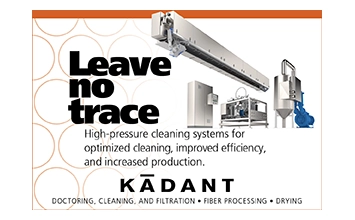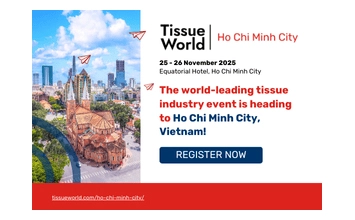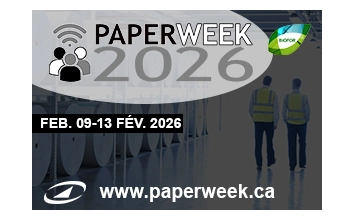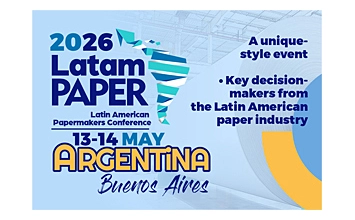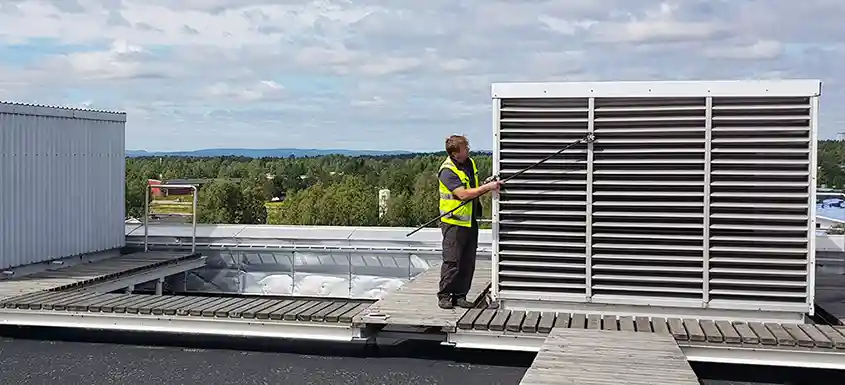Discover how cellulose nanocrystals significantly improve the precision and structural integrity of 3D bioprinted constructs for regenerative medicine while preserving cell viability, creating engineered scaffolds that better mimic natural tissue for improved wound healing and disease research.
CNCs improve alginate bioink flow and mechanical stability
Polymeric hydrogels are used in tissue engineering and regenerative medicine (TE&RM) to create customizable 3D environments that mimic the body’s extracellular matrix and support mammalian cells for tissue development. These materials have recently evolved into bioinks, in which the biomaterials are combined with living cells to create artificial tissues through additive manufacturing known as 3D bioprinting.
The ideal polymeric bioink for extrusion-based bioprinting should flow smoothly, recover its shape after printing and crosslinking, and of course preserve cell viability. Creating effective bioinks therefore requires balancing opposing rheological requirements. High viscosity inks offer better printing quality, while more fluid inks avoid shear forces during extrusion from the print nozzle which can damage or kill cells, preventing the growth of the desired tissue.
To address this challenge in 3D bioprinting, researchers must navigate the “biofabrication window”: finding the narrow compromise between material properties that enable effective printing and those that support cellular function.
Developing tailored bioprinting inks for a healthier future
Tissue engineering and regenerative medicine have the potential to transform healthcare by enabling the repair and replacement of damaged or lost tissues and organs, ultimately enhancing the quality of life for countless people. The ability to tailor tissue scaffolds to exact biological requirements is paramount to realizing this vision.
Optimal bioprinting parameters often lie outside the constraints of the traditional biofabrication window’s narrow boundaries. As such, strategies to expand the range of processable inks are required.
Solutions for more effective 3D bioprinting
For example, the use of suspension baths of self-recovering gels to support low-viscosity polymeric bioinks and prevent the collapse of the 3D-printed constructs has been attempted. Unfortunately, these methods have numerous restrictions of their own which prevent their more widespread use in TE&RM.
Alternative polymeric inks such as alginate-based materials have been widely explored for bioprinting, as they form cell-compatible hydrogels. However, they face several barriers to their use in TE&RM applications: Alginates are low viscosity bioinks that tend to spread when at rest, leading to reduced printing resolution. They also require blending with other biomaterials, adjustment of their molecular weight and concentration, and printing in suspension to optimize their bioactivity and printability.
Expanding bioprinting capabilities with cellulose nanocrystals
Nanocellulose hydrogels and additives, including cellulose nanocrystals (CNCs), are being investigated to solve these issues in 3D printing (e.g., direct ink writing of edible structures) and tissue engineering based on their many unique properties:
- They are biocompatible
- They exhibit shear-thinning rheological properties
- They have exceptional mechanical properties (elastic modulus and strength) and reinforcing capabilities
Cellulose nanocrystals are a promising naturally sourced and accessible additive enabling the use of low viscosity bioinks for optimal and effective tissue engineering and reconstructive medicine.
Alginate-CNC hydrogel bioinks with superior extrusion printing properties
Read et al. at the University of Manchester have prepared hydrogel blends of alginate (1% w/v) and CNCs (1% and 2% w/v) by combining alginate and CNC suspensions, adding chondrocyte cells to the pre-gel and mixing, then crosslinking using calcium chloride to form a gel. The resulting bioink was then 3D printed as shown in the image above (scale bar represents 200 microns).
The addition of cellulose nanocrystals to the bioink provided a number of valuable benefits:
- Increased cell viability – CNCs improve the shear thinning behaviour of the bioink, meaning that (despite its higher viscosity at rest) the CNC-alginate bioink can be printed at lower pressures, which is gentler to the cells.
- Higher printing resolution and shape fidelity – After printing, the CNC-alginate bioink returns to its higher at-rest viscosity, resulting in smaller filament diameters and more accurate recreations of biological structures.
- Improved mechanical stability and structural integrity of the printed construct – CNCs reinforce the printed bioink network, which recovers its structural properties quickly after repeated applications of high shear stress.
- Uniform cell distribution in the printed constructs – The CNC-alginate bioink printed constructs showed less cell sedimentation, which occurs as the ink stands in the printing cartridge.
How CNCs can facilitate printing of accurate fibrillar tissues
CNCs’ shear alignment behavior during extrusion-based bioprinting offers yet another benefit: the aligned nanocrystals within printed bioink filaments may serve as templates to guide cell organization, enabling the formation of fibrillar networks that closely mimic biological tissues such as cartilage.
The SEM images below show cross-sections of filaments from freeze-dried 3D printed constructs of alginate-CNC bioinks containing 1% w/v of each component (arrows indicate the preferential local directionality of the CNCs).

Cellulose nanocrystals: a multifaceted bioprinting additive
Adding small amounts (up to 1% w/v) of cellulose nanocrystals to low-viscosity hydrogels clearly has the potential for incalculable benefits. CNCs enable precise printing and robust material properties, facilitating the development of biologically relevant scaffolds that optimize tissue formation and function.
In implants for tissue repair or as disease models for research, improved print quality can translate to improved quality of life for many!
How CelluForce optimizes manufacturing and product quality with CelluRods®
Integrating cellulose nanocrystals into their formulations allows manufacturers to fine-tune viscosity and flow properties, boost mechanical durability, and keep particles evenly suspended – all with one sustainable and biodegradable additive!
CelluRods® cellulose nanocrystals have the potential to facilitate and innovate many manufacturing processes, including 3D bioprinting of scaffolds for tissue engineering and regenerative medicine. Do not hesitate to reach out to our team for a free sample or to discuss your product development!
Discover how cellulose nanocrystals’ thickening, strengthening, and suspending properties can elevate your processes and products and order a free CelluRods® sample now!
For more information, please consult the full article:
Nanocrystalline cellulose as a versatile engineering material for extrusion-based bioprinting












